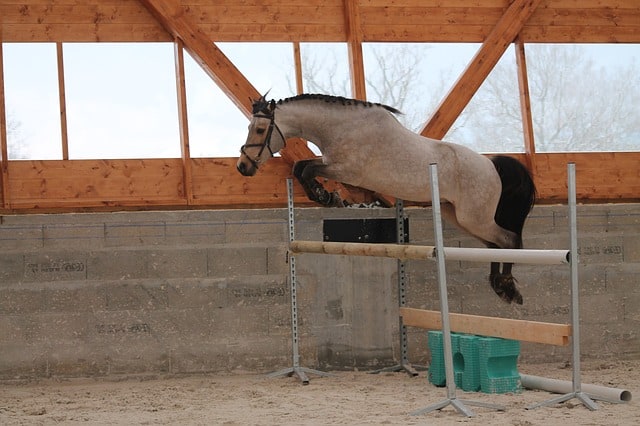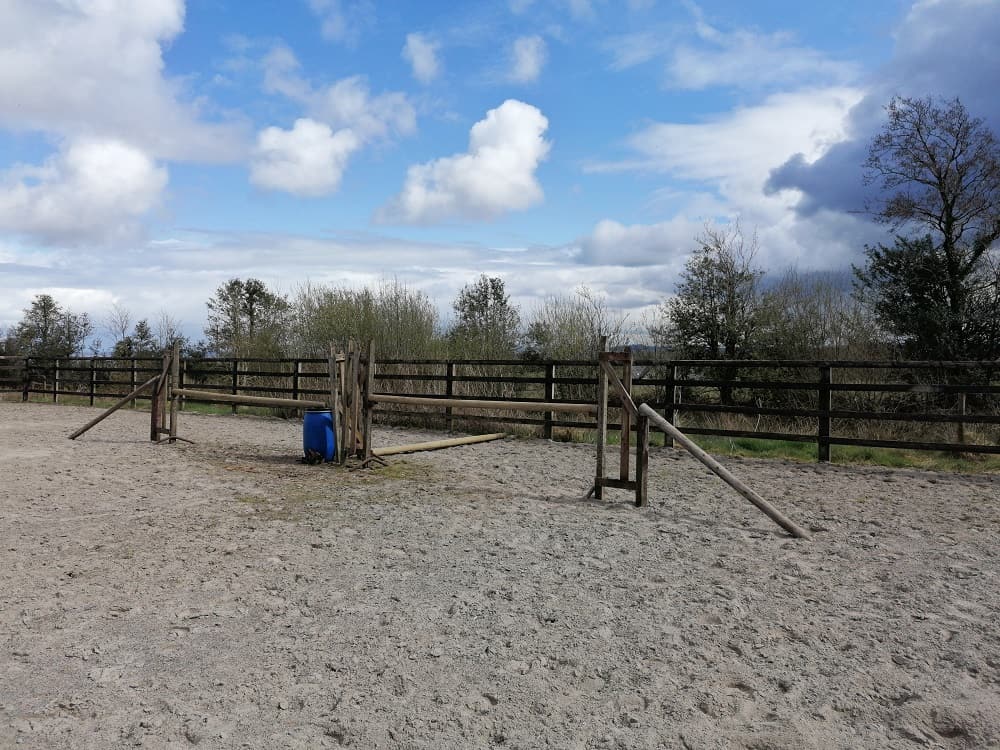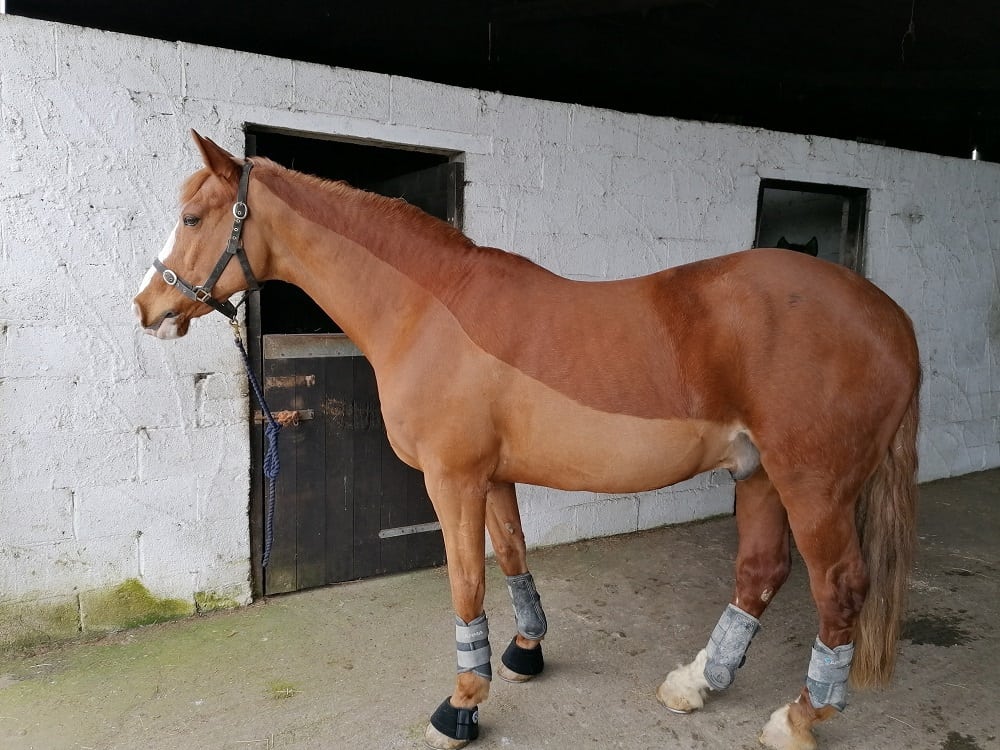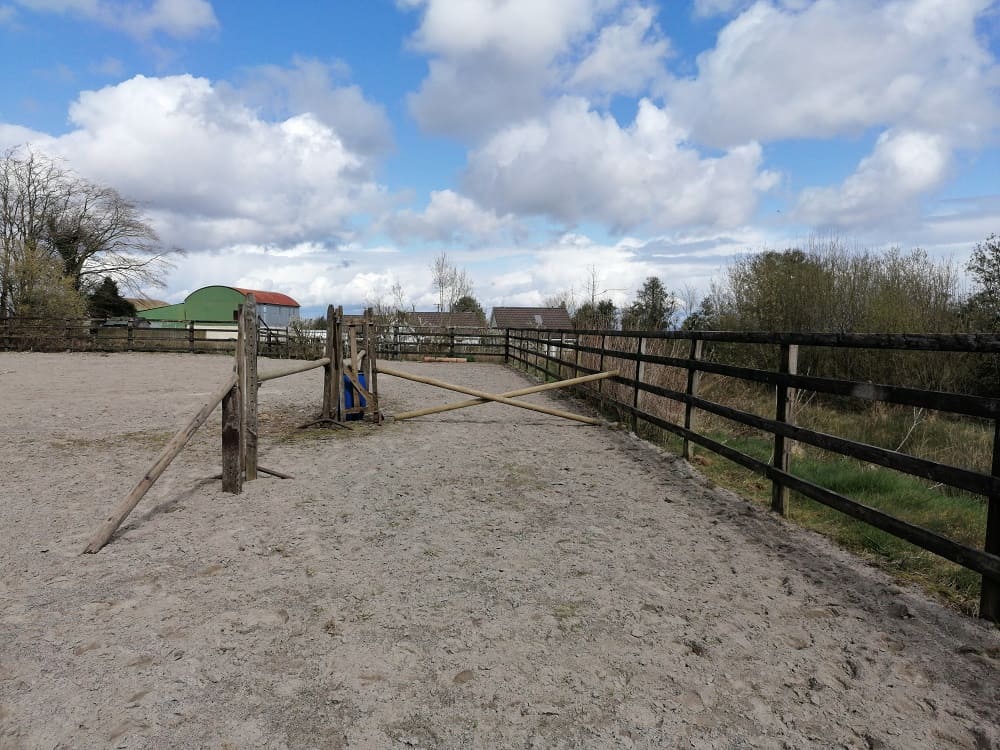Loose jumping your young horses is a wonderful way of getting them used to jumping before they carry a rider on their back. It can also be a way of doing something a little different with your horse, making their arena training a little more interesting.
Loose Jumping is another training tool which is of great benefit to both young and more experienced horses, but initially it is a super way to get your young horse jumping, starting small, building his confidence so that he learns how to approach his fences and correct himself when he makes mistakes.

Before You Start.
The Arena
Prior to starting it is much better for your horse’s education if they are lunging well and responsive to your voice aids. When the horse is used to following your voice commands, it makes the first loose jumping experience less stressful and more enjoyable for all concerned.

Set up the arena with a jumping lane down one side, use uprights to fence off the lane along with some jumping poles. Have your jump wings in place along with poles on the ground. I like to start with single fence that I can make into a low parallel if the horse progresses well. The reason I do is to keep it as simple as possible for the young or novice horse. Making your horse’s first loose jumping experience easy, builds his confidence as he learns.
Ensure you have 3 to 4 people to help you get going. Having help makes it easier to keep your horse on the outside track and working fluidly down the jumping lane. Also I like to have a bucket of nuts or feed handy, so that the horse gets a reward when he has done his task.
The Horse

For Loose Jumping, I like to boot the horse up all round with over reach boots in front as well and tendon boots or brushing boots both in front and behind. As I said when I am breaking my horses, I normally get them lunging well and used to my voice aids prior to loose jumping, therefore, they are normally shod. In my experience booting them up prevents those knocks and overreaches that can all too often occur when jumping. I will normally loose jump in just a head collar using a lead rope to lead the horse through the jumping lane.
Getting started
Now that you have your helpers and your arena ready along with your horse prepared, you can get started. I find it is better to loose school the horse for a few rounds, just to get him used to working around the arena and down the jumping line with the poles on the ground. I will normally lead the horse down over the poles the first time. Then send him out on his own in trot and canter getting him going down the jumping lane, aiming to keep it nice and steady. Think of only using the lunge whip to keep your horse going forward steadily. Once your horse has trotted and cantered over the poles a few times allow them to come to you for a small rest and reward as one of your helpers puts up the first cross pole.

Once the small cross pole is up, send your horse out in much the same way, and aim to keep him going forward quietly over the cross pole. Normally when they are cantering and the first fence is kept small, they will take it in their stride. When they have done it a few times, remember to allow them to come into you for a rest and a reward.
When the horse is taking the cross pole well, I will normally put up a small upright, and repeat the process. Allowing them to come in for a rest and reward as they perform the task correctly. If they are working well over that, I will then try a small parallel, with a cross pole in front and a straight bar behind. I find that starting with the semi parallel gives the horse every opportunity to see the second rail and jump the fence clear.
On the first occasion if the horse is performing well enough when we get to a small parallel, I will leave it there on a positive note.
Trouble Shooting.
What If Your Horse Stops at the Cross Pole?
If you find that your horse stops and is reluctant to jump even the cross pole, I will normally put one side of the cross pole down, and lead them over it and then send them out on their own to do the half cross pole. Remember you are teaching your horse a new task. If the horse is stops this is because he is either afraid or doesn’t understand, so break the task down and make it easy for him, this will build up his confidence. Once he has done the half cross correctly a couple of times, put the cross pole back up and get him going confidently over that. I will normally leave it there for the first experience as it is very important to leave it on a good note.
In Conclusion
It is important to remember that loose jumping is an exercise that we teach our horses, so that they can learn how to approach and jump a fence in a confident manner. Over the years, I have found some horses take it easily in their stride, and jump quite well from day one. It is important not to over face such a horse on the first occasion. Equally there are horses that need to be taken very slowly and we may only get a cross pole done on the first loose jumping exercise, which is perfect and once you finish on a positive note, you can build on this at the next session.
The important thing is that whatever you do, aim to have the horse performing it confidently with lots of reward and praise when they get it right. By taking things easy and repeating the exercise often you will build confidence in your horse, giving you a happy and willing partner for your equestrian pursuits.
This Article was originally published in the April 2021 Issue of Irish Sport Horse Magazine.
